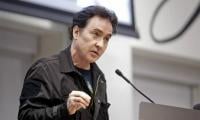A 2020 report by the Pakistan Institute of Development Economics (PIDE), titled ‘State of graduate unemployment in Pakistan’, put the unemployment rate of graduates at 16.5 per cent. Another study by PIDE early last year puts the youth unemployment rate, which includes graduates and non-graduates, at 31 per cent. Given the slide the economy has been on since then, both these figures are likely to have risen even further.
Official statistics for the starting salaries of new graduates in Pakistan are hard to come by. The website, Pk(dot)Indeed(dot)com, estimates the average starting salary for new graduates in Pakistan at Rs34,757, roughly in line with anecdotal accounts. Considering the high rate of core and fuel price inflation, it will be very difficult to save anything out of early career paychecks, but it is important that you do. The end of your working life might seem like a very long time off, as much as four decades. But that gives you the most important ingredient for retirement investing: time.
This op-ed is primarily meant for young adults (and their parents) – the 18–24-year-olds of this country, graduating from high-school, and just entering, already in or leaving universities and joining the workforce, and about to start their adult lives. I do not want to spread the discussion too thin and focus on only two things every young adult in 2023 must know to avoid unnecessary frustration later in life:
First, choose your university (or vocational) programme of study wisely! I have been on enough campuses and spoken to rooms packed with students to have come to the realization that basic information about how to pick a university and programme are not common knowledge. First generation college/university-goers in particular, who do not have a parent or close relative at home that has attended university, tend to be at a disadvantage. Before you apply to a university programme, have answers to these questions.
Is the university recognized by the Higher Education Commission (HEC)? The answer to this question is easy to obtain because the HEC has made this information readily available on its website.
Once you have established that the Higher Education Institute (HEI) you are considering is recognized, you must determine if the specific programme you are interested in is also properly accredited. For that, you must first identify the professional accreditation council responsible for its accreditation. For example, engineering programmes are accredited by the Pakistan Engineering Council (PEC), medical programmes are the responsibility of the Pakistan Medical Commission (PMC), computer science and related programmes the responsibility of the National Computing Education Accreditation Council (NCEAC), etc. The complete list of accreditation councils is published by the HEC (https://www.hec.gov.pk/english/services/universities/QAA/Pages/Accreditation-Councils.aspx).
Graduates from HEIs not recognized by the HEC or programmes not duly accredited by relevant accreditation councils have severely limited future options. They are ineligible for public-sector jobs and many private sector jobs, too. Even if they plan to work abroad or emigrate, the process begins by having their credentials evaluated. That process begins by having the HEC attest degree(s) and transcript(s) which it will not do if the HEI is not recognized, or the programme not accredited. Put simply, a ‘bad’ credential can block their path to working abroad or emigrating. A bad credential also renders them ineligible for admissions to local HEIs for further study (MA/MS/PhD) and all manner of local and foreign scholarships. The only jobs they are able to hold are ones that do not require a recognized degree.
In a perfect world, schools would have school counselors that give this information to high-school seniors. Without them, the least that could be done is send a letter with this information home to every grade-12 student.
Answers to the above questions can be found in black-and-white but are only a minimum benchmark. A few decades ago, the cost of higher education used to be manageable enough that middle and upper-middle class households could accommodate it in their running household budget without saving years earlier. Today tuition fees alone at sought-after public and private universities easily range anywhere from Rs1 to Rs5 million for a four-year undergraduate programme, excluding cost of living and transportation.
Naturally, these higher price tags invite greater scrutiny in the form of personal cost-benefit analysis. With the cost of education in the millions, students are justified in asking what ROI, what return they can expect on this investment. While perfectly justified, unfortunately, this is a question that is harder to answer. Most HEIs are happy to share well produced shots of their campuses and students, and cherry-picked examples and testimonials of successful graduates. However, very few are willing to share a more holistic picture in the form of statistics, for example, employment rate six months post-graduation, average / highest starting salary, etc.
The few universities that share their graduates’ employment statistics tend to be the ones that have nothing to hide. When you are looking at HEIs and their programmes, demand this information, even if you are turned down. In the absence of such data, you will have to make the effort to connect with recent alumni, network, and collect your own data. This brings me to my second point.
Second, start saving for your retirement early (now!) because your employers will not pay you a pension – you will have to make your own.
According to a November 2020 policy note by PIDE, titled ‘The pension bomb and possible solutions’, in FY 2019-2020, Rs421 billion (7.6 per cent) of the current expenditure in the federal budget was allocated to civil and military pensions. Furthermore, federal pension liabilities are growing at 25 per cent per annum, far outpacing the rate of economic growth which has been languishing in the low single digits for the last few years.
Pakistan’s legacy public pension system, in which retirees are guaranteed a fixed pension (like a salary) and other perks is called a defined-benefits pension system. Defined-benefits pensions have become unsustainable, and many countries have moved away from them. Eligibility to draw a pension is usually linked to a minimum number of years of service (usually 25 years). This means anyone that takes up a public-sector job with a pension is incentivized to stay in that job until retirement. In the US, the average number of jobs a worker has in their life is 12. Other studies estimate the average number of career changes during their working lives at three. Once upon a time, a lifelong career with the same employer used to be the norm, but in today’s labor market that has become an anomaly.
Over the last decade, many public-sector jobs have transitioned to contractual appointments without traditional pensions. The traditional defined-contribution pension system is unfunded (meaning: the money that should have been there to pay for pensions has already been spent elsewhere) and is on track to bankrupt the federal and provincial governments in a few more years.
The alternative to defined-benefits is the defined-contribution pension system in which the employee (and often employer too) pays into the worker’s retirement account which frees employers from long-term pension commitments. When a worker moves to another job, they take their retirement account with them.
To grow their retirement nest-egg, the saved contributions are invested. That requires a broadening of the traditional definition of investment beyond buying and flipping plots, as has been the case for older generations. Typically, retirement investments are distributed in a mix of risk-free savings certificates, exchange-traded-funds (baskets of stocks of publicly listed companies that have a higher risk attached but the possibility of a higher returns), mutual funds (also baskets of stocks of publicly listed companies but actively managed by fund managers), and stocks of individual companies (subject to single-company-risk but no management fees and the possibility of high returns).
Workers, or a professional financial adviser they hire, decide on a mix of these investments based on their risk tolerance, which ones to buy or sell and when. Contributions are typically tax exempt. In the US, Investment Retirement Accounts (IRAs), Roth IRAs, and 401k / 403b accounts all serve the purpose of investing and growing those investments for retirement.
Whether this excites or overwhelms you, this is the direction pensions worldwide are going. Several public organizations are already unable to pay out their retirees’ pensions. That is why late last year, the Khyber Pakhtunkhwa government introduced the defined-contribution pension program for its public sector employees in a bid to move away from traditional pensions. The federal and other provincial governments will have to follow suit soon or make a miracle happen.
There is only so much I can say in an op-ed. So, in conclusion, I would like to give you one last piece of unsolicited advice. Over the course of a four-year bachelors programme, you will read at least 30-40 books. For a lot of other things in life, read at least one good book each about personal relationships, personal investing and finance, parenting / psychology and big history – all the things you need to know in today’s world, but schools don't teach you.
The writer (she/her) has a PhD in Education.















